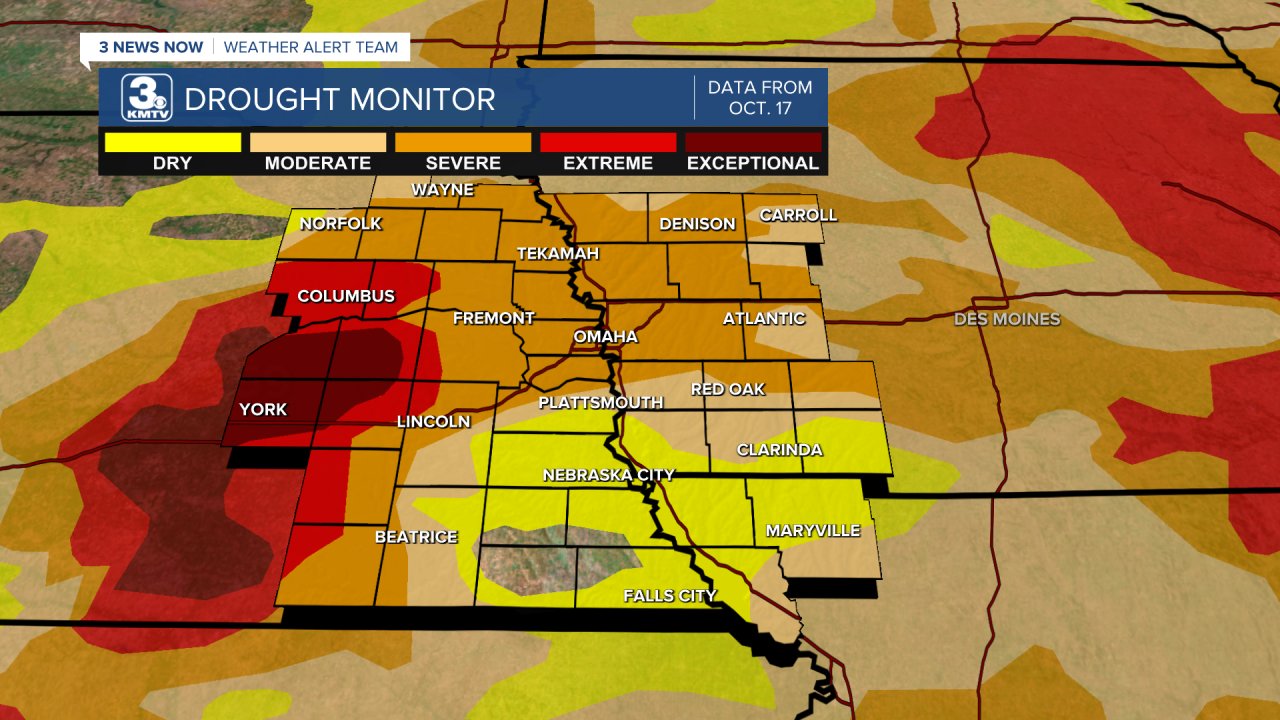For the past year and a half, eastern Nebraska and Iowa have been dealing with the effects of a persistent drought which had left our area parched for rain. After an arid Spring, including Omaha's driest May on record, that drought expanded eastward. It peaked in late June when the exceptional drought (5/5) expanded as far east as Gretna.

Then, our weather pattern flipped for July and August where repeated rounds of storms eroded the drought. By the middle of August, the exceptional drought had cleared the viewing area!

Then September came, and we got dry again. From September into October, the drought slowly expanded over east-central Nebraska, with the exceptional drought returning for Polk, York, Butler, and Seward Counties. Last week, the level 4 drought encompassed much of eastern Nebraska. Omaha and western Iowa are mostly in the level 3 drought, while south of I-80 is in lower categories.

Last Wednesday and Thursday, northeastern and central Nebraska experienced beneficial rainfall, enough to bring some significant drought improvements. In the latest outlook, the severe drought (4/5) has been removed from Madison, Stanton, and Cuming Counties. Elsewhere, little change occurred as much of the rainfall last week was confined to northeast Nebraska.

The big question is, how much rain is needed to end the drought across our area? We would need a lot to bust the drought anytime soon. To completely end the drought by the end of 2023, eastern Nebraska would need around 10" of rainfall, or roughly 335% of our average rainfall by the end of the year. Western Iowa is not too far behind at 9.63" of rain.
How about by next spring? Eastern Nebraska and western Iowa would need 12.53" of precipitation over the next six months to end the drought or around 150% of our normal precipitation for the same time period. Let's say we get no above-average months in terms of precipitation, how many average months would break the drought? We would put an end to the drought by November 2024 if we did not have any wet months going forward. Fingers crossed for a good period of wet weather!
Some good news is we expect an influx of moisture next week which could bring some much-needed rain to the region next week! Stay tuned to forecasts on our weather page for details on our rain chances!


